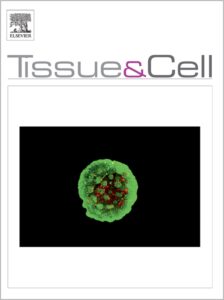Publications

Massage therapy modulates energy metabolism and alleviates skeletal muscle spasms in rats
Authors: Jiawei Sun 1, Changhe Yu 2, Yang Zhang 2, Fenglin Li 2, Yanhua Wang 2, Eryang Liu 2, Junming Guo 2, Xiyou Wang 2, Zhifeng Liu 2
Affiliations:
- School of Acupuncture-Moxibustion and Tuina, Beijing University of Chinese Medicine, Beijing, China
- Tuina and Pain Management Department, Dongzhimen Hospital of Beijing University of Chinese Medicine, Beijing, China
Journal: Tissue & Cell - September 2025, Volume 98, Article no. 103151 (DOI: 10.1016/j.tice.2025.103151)
-
Field & Applications:
- Sport
- Medical
- Treatment evaluation
- Fatigue / Overtraining
- Muscle development / Performance
Skeletal muscle spasm is a common pathological response to trauma, exercise-induced fatigue, and neurological diseases. Massage therapy is common in relaxation and rehabilitation procedures; however, its underlying metabolic mechanisms remain unclear. We aimed to explore the effects of massage therapy on muscle metabolism in a rat model of skeletal muscle spasm.
Twenty-four Sprague-Dawley rats were randomly divided into three groups: control, model, and massage. A rat model of muscle spasm in the model and massage groups was established via exercise-induced fatigue. Kneading manipulation was performed in the massage group. The pain threshold was assessed using mechanical withdrawal threshold (MWT) and thermal withdrawal latency (TWL). Hemorheological parameters were measured to evaluate blood viscosity. Lactic acid (LA) and blood urea nitrogen (BUN) levels were quantified using biochemical assays. The ultrastructure of the gastrocnemius muscle was observed using transmission electron microscopy. The metabolomic profiling of the gastrocnemius muscle was performed through liquid chromatography-mass spectrometry.
Compared with those in the model group, the MWT and TWL in the massage group were increased, and the oscillation frequency, blood viscosity, plasma viscosity, and LA and BUN levels were decreased. Electron microscopy revealed that the myofibrils in the massage group were more orderly arranged than those in the model group, with the massage group exhibiting clear light and dark bands and increased mitochondria. The metabolomics results showed 136 differential metabolites between the massage and model groups, which primarily participate in glycolysis, the pentose phosphate pathway, inositol metabolism, and lipid metabolism.
Massage therapy effectively alleviated skeletal muscle spasms, pain, and circulatory disorders caused by muscle spasms. It improved muscle metabolism by regulating the energy-related metabolic pathways and metabolites.
Keywords: massage therapy, muscle spasm, metabolomics, pain threshold, microcirculation, energy metabolism
Chinese massage therapy effectively alleviates skeletal muscle spasms and the increased tension, pain, and circulatory disorders caused by muscle spasms. This mechanism is related to the regulation of pathways and metabolites involved in energy metabolism. These findings provide new insights into the mechanisms of traditional manual therapy in the treatment of diseases related to muscle spasms.


